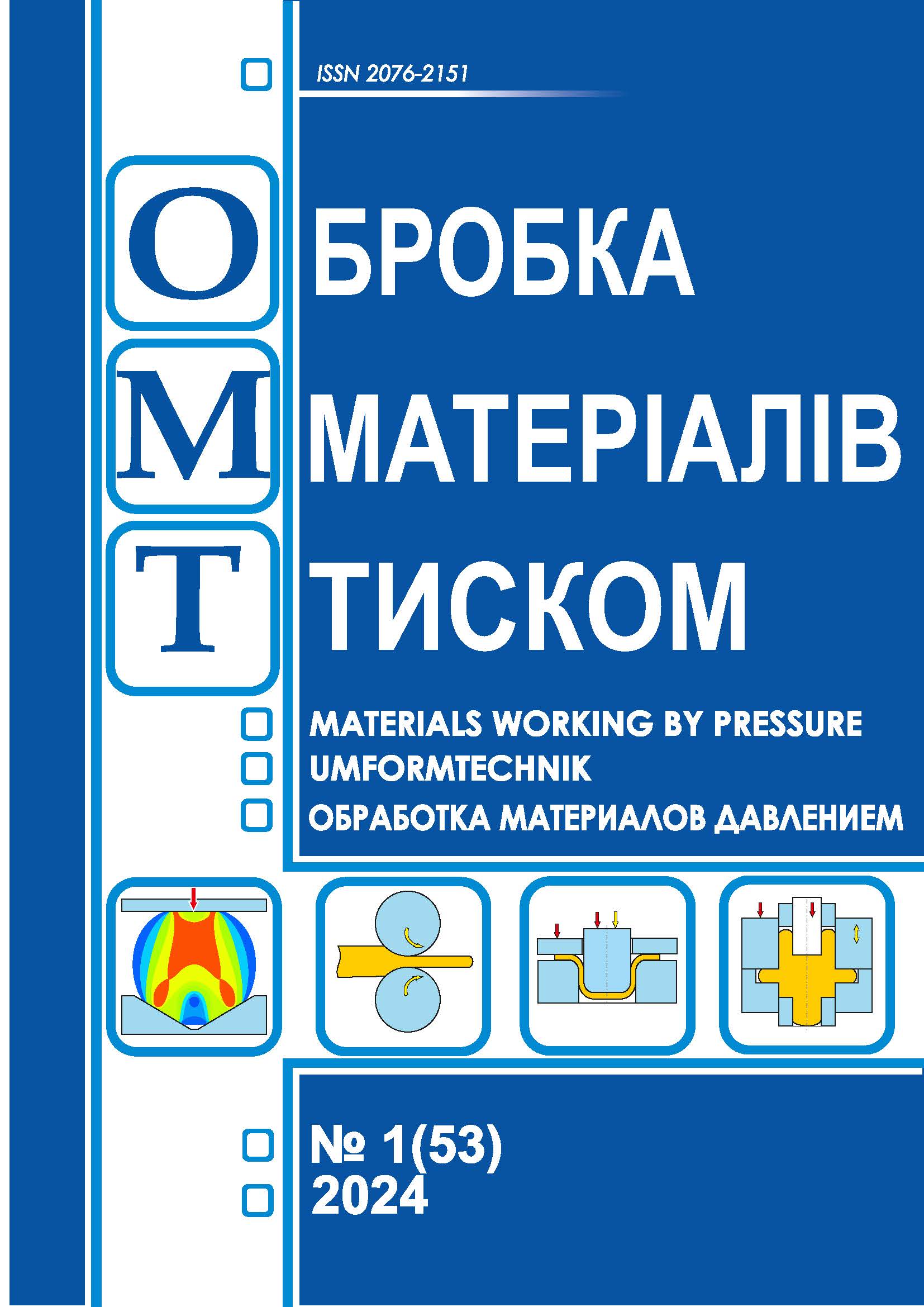Design of a radius matrix for drawing high cartridge cases
DOI:
https://doi.org/10.37142/2076-2151/2024-1(53)171Keywords:
drawing, die, mandrel, cartridge cases, working area, wear, matrix stability, hollow workpiece, FEM.Abstract
Markov O., Zinsky V., Rovenskyi S., Molodetsky V.
Design of a radius matrix for drawing high cartridge cases
The paper examines the technical process of drawing high sleeves through a radius matrix. Research is aimed at solving an important and urgent scientific and technical problem of improving the technical process of broaching through a radius matrix using a mandrel when stamping hollow forgings such as sleeves and tall glasses. The developed method increases the service life of drawing matrices. The finite element method (FEM) was used to simulate the method of pulling tall sleeves through a radius matrix with different rounding radii. According to the simulation results, the optimal shape and dimensions of the radius matrix for drawing were developed. Recommendations for the development of radius matrices have been established. These recommendations consist in the appointment of the optimal radius of the working surface of the extension matrix. The received recommendations were experimentally verified in production conditions. It was established that the drawing of high sleeves through the matrix should be carried out at a relative radius of the working surface of the matrix R/d = 3. As a result, the intensity of stresses and average stresses on the working surface of the matrix were reduced by 8...15 %, and the normal pressures were reduced by 10...15 %. The total force and the radial component of that force have been reduced to 50%. According to the research results, it was determined that the surface of the matrix heats up to 700...800 ℃, and the radius R/d=3 reduces the size of this zone by 1.5.... 2.0 times. Verification of the obtained results was carried out in industrial conditions. It was established that the drawing force for the radius R/d=3 is below 20%, and the stability of the matrix has increased by 20%. Thus, it is recommended to use radius matrices with R/d = 3 for pulling sleeves.

